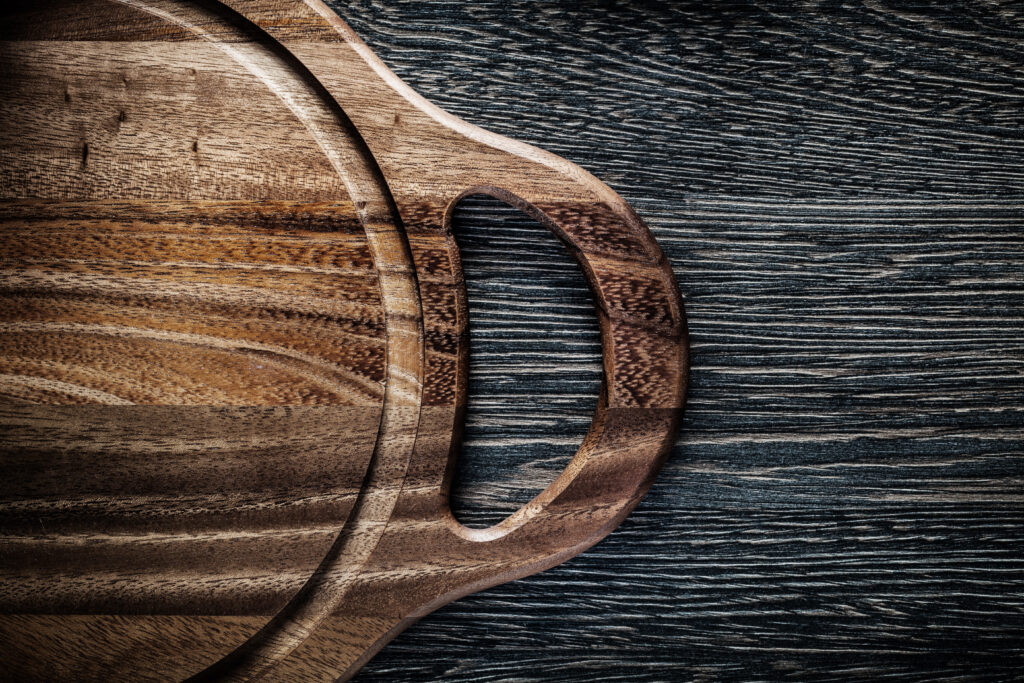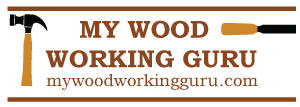Cutting boards last for years if looked after with beeswax polish and great care from the user.
Here Is Why Cutting Boards Have Grooves:
Cutting Boards have grooves to prevent food from sticking, prevent food scrapes and scratches, keep food from slipping and also to prevent food from moving while cutting.
This is the short answer to this question.
We will provide you the answers as to why cutting boards have grooves, why boards have holes, and what the grooves are for in a cheese board.

Why Do Cutting Boards Have Grooves?
Grooves are a signature feature of wood cutting boards. There are several reasons grooves are useful in a cutting board.
Reasons why cutting boards have grooves include:
1. Prevent Food From Sticking
Food does not stick to the grooved surface of a board. While it is possible for certain types of food or ingredients, such as grains or cheese, to stick between the grooves, for the most part, food does not become stuck in them if the correct cutting motion is used.
When slicing food with a blade, the correct cutting motion involves moving the blade parallel to the grooves in order to best cut food without pulling it.
2. Prevent Food Scrapes and Scratches
Food does not scrape or scratch the grooved surfaces of a board. Again, this is because food slides into and out of them during cutting, rather than staying in them and scraping against the grooves.
Scratching a non-grooved surface of a cutting board can damage or dull knives, but this is not an issue with grooved boards because they prevent the knife from touching the surface at all.
3. Keep Food From Slipping While Cutting
Keeping food in place while cutting is important. If food slips while cutting, an injury may result. Grooves help keep food in place because they provide a narrow space that can securely hold it in place while being cut. This allows the knife to get close to the surface of the board and cut food without slipping out of its groove and into one’s hand or leg during movement.
4. Keep Food From Curling While Cutting
Food should not curl while being cut because it can cause injury if the knife slips out of the groove and strikes one’s hand or leg. Grooves prevent food from curling during cutting because they securely hold the food in place.
If a piece of food curls while being cut, the blade will not be able to cut it, which means that the piece will have to be pulled back into place in order to finish cutting. This is not safe because pulling food across a blade can cause injury if the knife slips out of its groove and hits one’s hand or leg.
5. Prevent Food From Moving While Cutting
During cutting, food should stay in place. If food moves during cutting, an injury may result if the knife slips and causes cuts or lacerations because it has struck the hand or leg. Grooves in a wood cutting board prevent food from moving when being cut.
The grooved surface provides a channel for food to stay in while using the correct cutting motion to slice through food.
Why Do Cutting Boards Have Holes?
Holes are another signature feature of cutting boards. They are most often seen in wood, bamboo, and plastic chopping boards. There are several reasons why holes are included in a cutting board. 6 reasons cutting boards have holes include:
1. Drain Water
Just like grooves, holes can be used to drain water off of the surface of a board, which can make cleaning faster. If water is allowed to sit on a board and it gets dirty, it will be more difficult and time-consuming to clean. Holes drain water off of the cutting board which makes cleaning faster and easier.
2. Add Stability
Holes also help add stability to the surface of a chopping board. If there is not enough support under a cutting board, it can move, shift or tilt during use which can cause injury if the knife slides out of its groove. Holes help support the surface of a cutting board so that it remains stable throughout use.
3. Break Up Stains
Holes provide an easy way to break up stains on the surface of a cutting board. Stains are usually caused by food particles that are allowed to sit on the chopping board.
The stains can be difficult or sometimes even impossible to remove, especially if they are dark in colour. Holes provide an easy way for one to break up stubborn stains because they can be scrubbed through them with a brush, sponge, or knife edge.
4. Clean Under Food
Holes can be used to clean under food that is stuck in a groove. If one attempts to lift up or pull out food from a cutting board’s groove when it cannot be removed, the knife will likely get stuck and injure someone. Holes provide an easy way to clean under such food by allowing water and/or scrubbing action with a brush or sponge through the hole to clean under stuck food.
5. Prevent Food From Slipping While Cutting
Food should not move while being cut because it can cause injury if the knife slips out of the groove and strikes one’s hand or leg. Holes can be used to keep food from moving while cutting by providing a channel that keeps food from moving.
6. Increase Cutting Area
While not as common, cutting boards with holes may have more area to cut on than a board without them. If a cutting board is smaller or has very few grooves, one can use the holes to increase the amount of surface that they have to cut food on.
What Are The Grooves On A Cheese Board For?
The grooves on a cheese board are not for cutting. Grooves in a cheese board are included to help collect the excess liquid that comes off while cutting or serving the cheese.
This allows the juice from the cheese to be collected so that it can be used as a sauce with other items, rather than being wasted at the bottom of the board.
Why Do Charcuterie Boards Have Holes?
Charcuterie boards, also known as meat and cheese boards or a board and knife set, usually come with grooves to hold the meats and cheeses.
However, some charcuterie boards have holes in them as well. The holes may be used to collect the juice from the meat as it is cut so that it can drip down through the hole instead of accumulating on the board and making it too wet to cut more meat or cheese.
The holes may also be used as a channel to allow excess grease from the meat to drain off of the cutting board so that it does not accumulate where meats are placed.
There are several reasons why cutting boards have grooves, including draining water to help clean and adding stability. Holes can also be used to break up stains, clean under stuck food, or prevent food from moving while being cut.
Grooves in a cheese board are there to collect the excess liquid that comes off of the cheese as it is prepared. Charcuterie boards with holes may be used to allow excess liquid from the meat to drain off of the cutting board so it is not soaked with grease.

